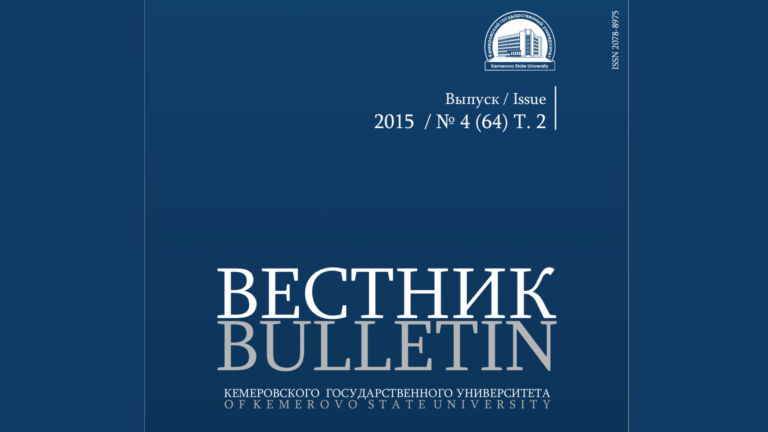
March 6, 2024
Zankavets, U, Popov, V. Control of coordination abilities of ice hockey players [Summary]
Bulletin of Kemerovo State University (Russia) · October, 2015
Purpose. Coordination abilities tests selection; Determination of the primary focus of each test; Investigation the relationship between different aspects of coordination abilities; Calculation of the evaluation scales for each test.
Subjects. 20 professional ice hockey players from the KHL (the top division of Russian hockey).
Results. 16 tests, that evaluate coordination abilities, were selected:
1) the Balance board test reflects the ability to maintain dynamic balance,
2) the Shuttle run 3x10 meters reflects speed qualities and the ability to change direction of movement,
3) the coefficient of change of direction of movement off ice (calculated as the difference in speed in 30 meters sprint and 3x10 meters shuttle run) reflects the relative (latent) indicator of the ability to change direction of movement off ice,
4) the Zigzag on ice skating test is the absolute indicator of the ability to change direction of movement,
5) the Zigzag on ice skating test with the puck characterizes the absolute ability to coordinate motor actions on ice,
6) the Stick handling test is the relative indicator of the ability to coordinate movements on ice (calculated as the difference betwen the last two tests),
7) the coefficient of change of direction of movement on ice (calculated as the difference in speed in the 27,5 meters skating sprint test and the 27,5 meters backward skating sprint test) reflects the relative (latent) indicator of the ability to rebuild motor actions on ice,
8-16) Stabilometry: the standart Romberg test on the "Stabilan 01-2" apparatus. 9 indicators were analyzes.
8) overal score on the standart Romberg test,
9) quality of the balance function wiyh open eyes,
10) quality of the balance function with closed eyes,
11) coefficient of sharp change of direction of movement with open eyes,
12) coefficient of sharp change of direction of movement with closed eyes,
13) fluctuations in the center of mass with open eyes;
14) fluctuations in the center of mass with closed eyes;
15) size of the support area with open eyes;
16) size of the support area with closed eyes.
The analysis revealed no significant correlation between the above tests.
The Rating Scale of Coordination abilities of the KHL players
| Test | Score | ||||
| very low | low | medium | high | very high | |
| 1 | 2 | 3 | 4 | 5 | |
| 1 | 14+ | 10 – 13 | 6 – 9 | 2 – 5 | <1 |
| 2 | >9,89 | 9,35 – 9,89 | 8,97 – 9,34 | 8,41 – 8,96 | <8,41 |
| 3 | >3,49 | 3,1 – 3,49 | 2,82 – 3,09 | 2,41 – 2,81 | <2,41 |
| 4 | >4,52 | 4,33 – 4,52 | 4,18 – 4,32 | 3,97 – 4,17 | <3,97 |
| 5 | >4,77 | 4,52 – 4,77 | 4,34 – 4,51 | 4,08 – 4,33 | <4,08 |
| 6 | >0,31 | 0,23 – 0,31 | 0,16 – 0,22 | 0,06 – 0,15 | <0,06 |
| 7 | >1,31 | 0,91 – 1,31 | 0,63 – 0,9 | 0,22 – 0,62 | <0,22 |
| 8 | >21,22 | 16,11 – 21,22 | 12,7 – 16,1 | 7,57 – 12,69 | <7,57 |
| 9 | <63,14 | 63,14 – 76,95 | 76,96 – 86,17 | 86,18 – 99,99 | >99,99 |
| 10 | <40,06 | 40,06 – 61,75 | 61,76 – 76,22 | 76,23 – 97,9 | >97,9 |
| 11 | >21,89 | 13,78 – 21,89 | 8,36 – 13,77 | 0,24 – 8,35 | <0,24 |
| 12 | >19,07 | 12,03 – 19,07 | 7,31 – 12,02 | 0,25 – 7,3 | <0,25 |
| 13 | >6,58 | 4,76 – 6,58 | 3,54 – 4,75 | 1,7 – 3,53 | <1,7 |
| 14 | >7,41 | 5,73 – 7,41 | 4,59 – 5,72 | 2,89 – 4,58 | <2,89 |
| 15 | >254,13 | 164,14 – 254,12 | 104,13 – 164,13 | 14,12 – 104,12 | <14,12 |
| 16 | >439,47 | 283,45 – 439,47 | 179,42 – 283,44 | 23,38 – 179,41 | <23,38 |
Conclusion. The rating scale of coordination abilities is a tool for selection and control of hockey players.
The results have practical and prognostic value for selection, assessment of the current level of coordination abilities of athletes, as well as for monitoring the adaptation to the training load.